Coptis chinensis
Coptis chinensis
1. The products in our compound library are selected from thousands of unique natural products; 2. It has the characteristics of diverse structure, diverse sources and wide coverage of activities; 3. Provide information on the activity of products from major journals, patents and research reports around the world, providing theoretical direction and research basis for further research and screening; 4. Free combination according to the type, source, target and disease of natural product; 5. The compound powder is placed in a covered tube and then discharged into a 10 x 10 cryostat; 6. Transport in ice pack or dry ice pack. Please store it at -20 °C as soon as possible after receiving the product, and use it as soon as possible after opening.
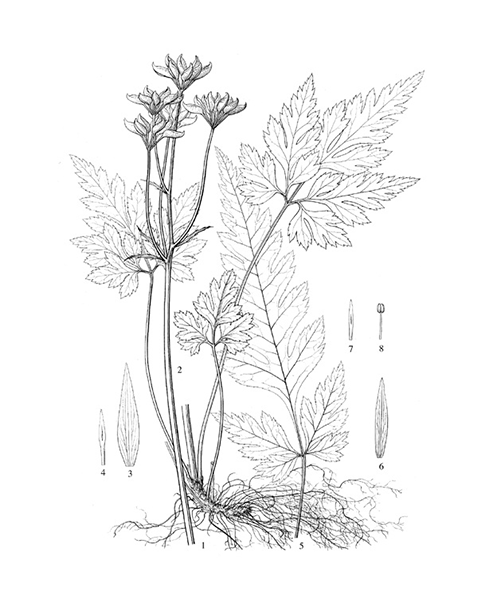
Natural products/compounds from Coptis chinensis
- Cat.No. Product Name CAS Number COA
-
BCN5914
Palmatine hydrochloride10605-02-4
Instructions
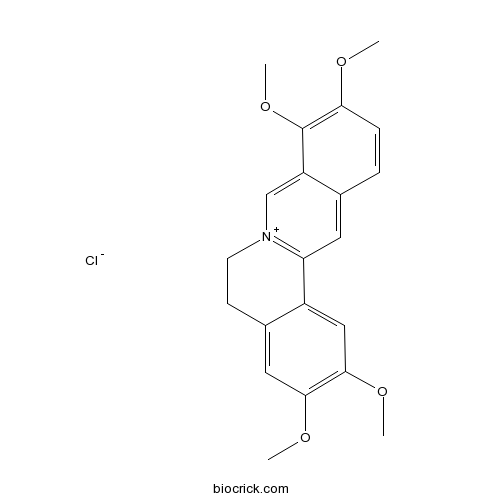
-
BCN5948
Ferulic acid1135-24-6
Instructions
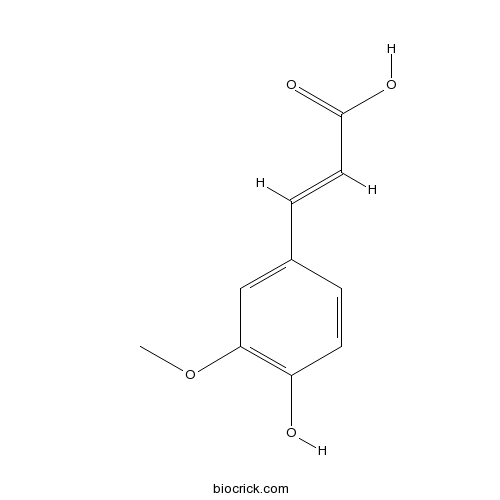
-
BCN2286
Coptisine sulfate1198398-71-8
Instructions
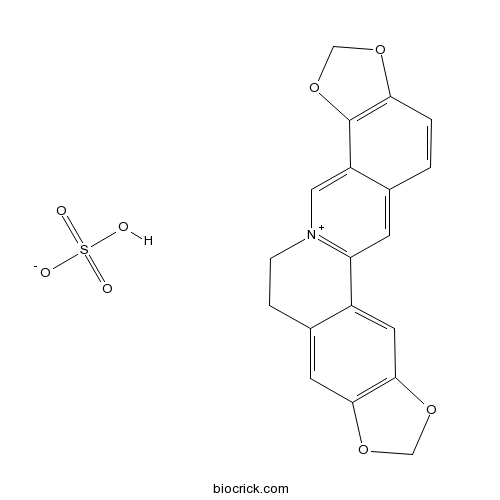
-
BCN5285
Palmatine3486-67-7
Instructions

-
BCN2722
Columbamine3621-36-1
Instructions

-
BCN6321
Coptisine chloride6020-18-4
Instructions

-
BCN6319
Berberine hydrochloride633-65-8
Instructions
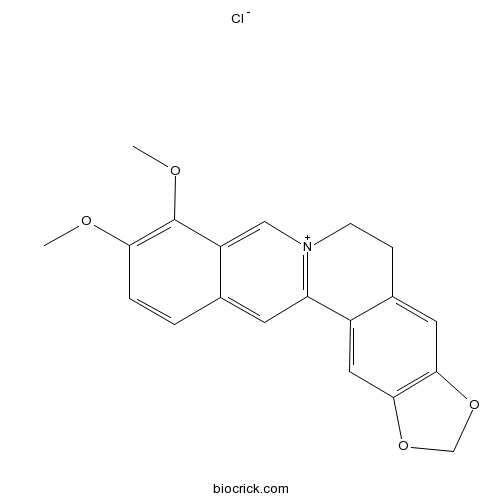
-
BCN4213
N-trans-Feruloyltyramine66648-43-9
Instructions

-
BCN5387
Epiberberine6873-09-2
Instructions

-
BCN4303
Obacunone751-03-1
Instructions

Jiao-Tai-Wan Improves Cognitive Dysfunctions through Cholinergic Pathway in Scopolamine-Treated Mice.[Pubmed: 30050927]
Cognitive dysfunction is characterized as the gradual loss of learning ability and cognitive function, as well as memory impairment. Jiao-tai-wan (JTW), a Chinese medicine prescription including Coptis chinensis and cinnamon, is mainly used for the treatment of insomnia, while the effect of JTW in improving cognitive function has not been reported. In this study, we employed a scopolamine- (SCOP-) treated learning and memory deficit model to explore whether JTW could alleviate cognitive dysfunction. In behavioral experiments, Morris water maze, Y-maze, fearing condition test, and novel object discrimination test were conducted. Results showed that oral administration of JTW (2.1 g/kg, 4.2 g/kg, and 8.4 g/kg) can effectively promote the ability of spatial recognition, learning and memory, and the memory ability of fresh things of SCOP-treated mice. In addition, the activity of acetylcholinesterase (AChE) was effectively decreased; the activity of choline acetyltransferase (ChAT) and concentration of acetylcholine (Ach) were improved after JTW treatment in both hippocampus and cortex of SCOP-treated mice. JTW effectively ameliorated oxidative stress because of decreased the levels of malondialdehyde (MDA) and reactive oxygen species (ROS) and increased the activities of superoxide dismutase (SOD) and catalase (CAT) in hippocampus and cortex. Furthermore, JTW promotes the expressions of neurotrophic factors including postsynaptic density protein 95 (PSD95) and synaptophysin (SYN) and brain-derived neurotrophic factor (BDNF) in both hippocampus and cortex. Nissl's staining shows that the neuroprotective effect of JTW was very effective. To sum up, JTW might be a promising candidate for the treatment of cognitive dysfunction.
Synthesis and anticancer activity of 9-O-pyrazole alkyl substituted berberine derivatives.[Pubmed: 30014806]
Berberine (BBR), an isoquinoline plant alkaloid isolated from plants such as Coptis chinensis and Hydrastis canadensis, own multiple pharmacological activities.
[Hypolipidemic effect of Coptis chinensis and C. deltoidea on type 2 diabetes rats through SCAP/SREBP-1c signal pathway].[Pubmed: 29933682]
None
Localization and Speciation of Chromium in Coptis chinensis Franch. using Synchrotron Radiation X-ray Technology and Laser Ablation ICP-MS.[Pubmed: 29872075]
Coptis chinensis Franch. is one of the most important medicinal plants globally. However, this species contains relatively high concentrations of chromium (Cr) which potentially detrimental to human health. It is important to understand Cr localization and speciation in order to evaluate its accumulation and transportation mechanisms and minimize Cr transfer to humans. As little previous work in this area has been carried out, we utilized synchrotron radiation microscopic X-ray fluorescence (SR-μXRF) and laser ablation inductively coupled plasma mass spectrometry (LA-ICP-MS) to spatially locate Cr, X-ray absorption near-edge spectroscopy (XANES) to analyze Cr speciation, and inductively coupled plasma mass spectrometry (ICP-MS) to detect Cr subcellular concentration. Micromapping results showed that Cr was distributed predominantly within the vascular cylinder, the periderm and some outer cortex, and the cortex and some vascular bundles in root, rhizome, and petiole, respectively. XANES data showed that Cr(VI) can be reduced to Cr(III) when grown with Cr(VI), and yielded a novel conclusion that this plant contain elemental chromium. ICP-MS data showed that Cr was primarily compartmentalized in cell walls in all tissues. The new insights on Cr accumulation in C. chinensis Franch. provide a theoretical basis for the evaluation of Cr in other medicinal plants.


